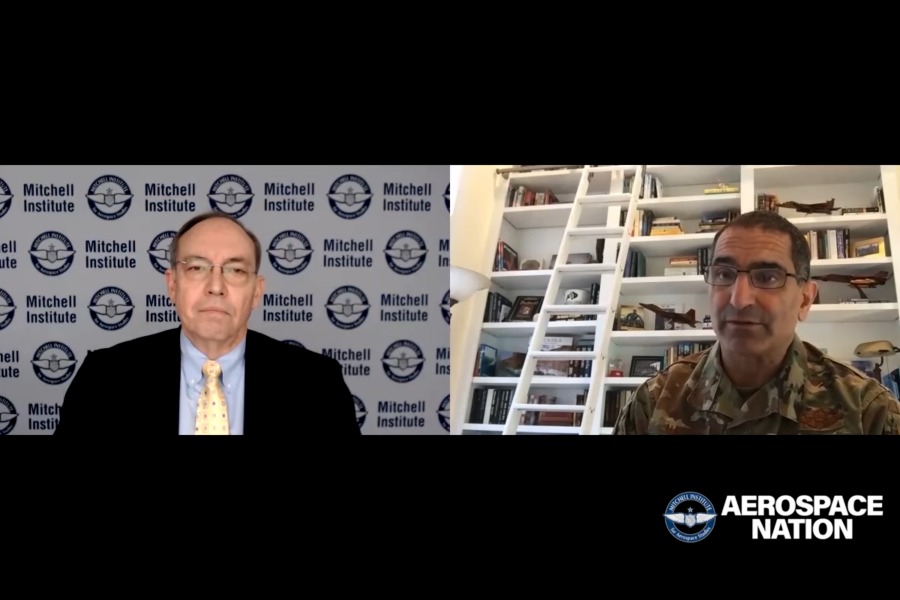The Air Force doesn’t expect to retire any more B-1 bombers past the 17 earmarked for the boneyard in the fiscal 2021 budget, but plans a “graceful” turnover to the new B-21 in about a decade, the service’s top planner said April 16. Production of the new bomber, which will enter testing “soon,” will also be “accelerated” after testing is complete, said Lt. Gen. David Nahom, deputy chief of staff for plans and programs.
The retirement of 17 of the most troublesome B-1s “doesn’t mean there’s any more reductions planned,” Nahom told retired Lt. Gen. David Deptula, dean of AFA’s Mitchell Institute for Aerospace Studies, in an April 16 teleconference.
“We’ve got to get to a two-bomber fleet,” that is comprised of new B-21s and B-52s that have been upgraded with new engines, communications, radar, and weapon systems, Nahom asserted. The B-1s will also get upgrades, including those to make it a “missile carrier,” but despite the airframe reductions, its maintenance force at Dyess Air Force Base, Texas, and Ellsworth AFB, S.D., will remain the same, to make maintenance easier and improve readiness of the aircraft, he added. It will be retained long enough that it can “shake hands” with the B-21 about a decade from now.
The savings generated by reducing the B-1 fleet—as well as reducing the scope of the B-2 Defensive Management System—“allows us to keep the B-21 on track, and we do have future plans to accelerate it, and that’s something we’ll talk about after we get the first ones flying,” Nahom said. The B-21 is “just starting production, [and will be] going into test pretty soon, here.”
Nahom also said the B-2 will be retained longer than the B-1 for its ability to penetrate enemy air defenses, even though Air Force Global Strike Command’s 2018 “Bomber Vector” forecast the B-2 would retire in 2031 and the B-1 in 2032 or later.
USAF is going to stick to its goals to field a 220-bomber force sometime in the 2030s, even though current plans would only add up to 140 bombers, he added.
It’s almost certain the B-21 will have some “bumps along the way,” meaning delays in development or fielding, and USAF will therefore have to “stay flexible,” Nahom said.
“I know the date that we’re thinking the B-1 leaves service, but I know the reality of developing new programs,” Nahom said, and USAF will “work through” those issues with Northrop Grumman as they arise. But for now, the B-21’s schedule is based on the “best case” scenario.
“We know we’re going to need to adjust” and HQ USAF is working closely with Global Strike Command on that, he said.
In about 10 years, “we’ll have B-21 filling out squadrons, with B-1 gracefully retiring, and then very soon after that the B-2s gracefully retiring. That’s a perfect world. And in a very perfect world, we’ll get to 220 bombers,” Nahom said. That’s the figure combatant commanders need and will expect, he said. “That is our goal, we’re going to try to get there.”
